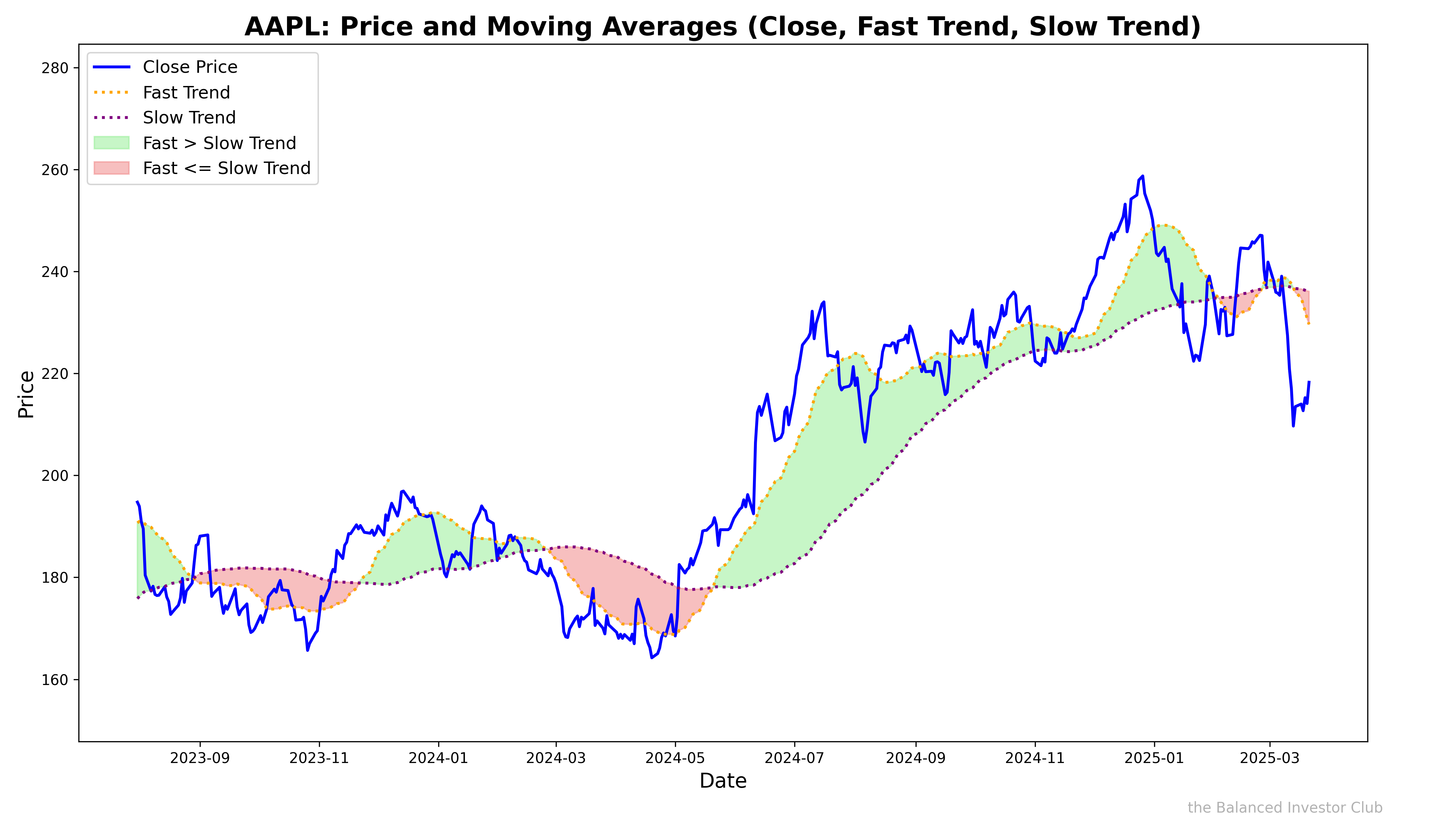Mastering the Art of Following Trends in Stocks and Assets
The Balanced Investor Club: Mastering the Art of Following Trends in Stocks and Assets
As investors, we navigate an ever-changing landscape, where identifying trends can provide a competitive edge. Whether you're tracking individual stocks, indexes, or other assets, spotting patterns empower you to make informed decisions, optimize your portfolio, and capitalize on market movements. In this post, we’ll delve into the techniques and tools that help investors follow trends effectively and avoid common pitfalls.
What Are Market Trends?
Before diving into strategies, it’s crucial to understand what trends are and why they matter. Trends are general directions in which the price of a stock, index, or asset is moving over time. These can be classified as:
-
Bullish (up) Trends: When prices are rising consistently.
-
Bearish (down) Trends: When prices are declining steadily.
-
Sideways Trends: When prices fluctuate within a narrow range, indicating stability.
Following trends is not just about recognizing these movements; it’s about understanding why they’re occurring and determining if they align with your investment goals.
Why Following Trends Is Important
Trend-following is based on the principle that markets have momentum. Once an asset starts moving in a certain direction, it often continues to do so for a period of time. This approach can:
-
Help you avoid rash decisions driven by short-term fluctuations.
-
Provide opportunities to ride the wave of consistent gains.
-
Enable risk management by identifying when trends are reversing.
Rather than predicting trends, trend-following focuses on responding to observable patterns, making it a practical strategy for investors across experience levels.
Tools for Tracking Trends
To follow trends effectively, leveraging the right tools is key. Here are some of the most popular tools and techniques:
1. Moving Averages
Moving averages smooth out price data over a specified time period, revealing the underlying trend. Common types include:
-
Simple Moving Average (SMA): Calculates the average price over a fixed period.
-
Exponential Moving Average (EMA): Gives more weight to recent prices, reacting faster to changes.
For example, a 50-day SMA crossing above a 200-day SMA may indicate a bullish trend.

2. Relative Strength Index (RSI)
The RSI measures momentum by comparing recent gains and losses. Ranging from 0 to 100, values above 70 suggest an asset may be overbought, while values below 30 indicate it may be oversold.
3. Trendlines
Drawing trendlines on price charts helps visualize upward or downward movements. These lines act as guides to predict future behavior based on past performance.
Volume Analysis: The Forgotten Factor
Volume, the number of shares or contracts traded, plays a critical role in confirming trends. High volume paired with price movement indicates strong investor interest, while low volume suggests caution. For instance:
-
A sharp price increase with low volume might signal a temporary rally.
-
Consistent price rises with high volume could signify a reliable bullish trend.
Staying Updated with Market News and Screening Tools
In today’s digital era, staying informed and identifying trends is more accessible than ever. Platforms like Yahoo Finance, Bloomberg, and Morningstar allow you to set alerts for specific stocks, indexes, or sectors, helping you stay aware of external factors driving market trends. To further refine your focus, stock screeners such as Finviz, TradingView, and Zacks enable you to identify assets that meet specific criteria—like recent price increases or high trading volumes. By combining real-time news updates with customizable screening tools, you can align your strategy with current market conditions effectively.
Understanding Risks in Trend-Following
While trends can provide valuable insights, they don’t guarantee future performance. Sudden market shifts, caused by unforeseen events, can disrupt even the strongest trends. Mitigating risks requires:
-
Diversification: Avoid overexposure to one asset class or trend.
-
Stop-Loss Orders: Set automatic limits to minimize losses during trend reversals.
-
Periodic Review: Regularly reassess your strategy based on current market conditions.
A Case Study: Following Trends in Index Funds
Index funds often reflect broader market trends. For instance:
-
During a bullish market, funds like the S&P 500 Index may show consistent upward movement.
-
Conversely, during bearish periods, defensive sectors such as healthcare or utilities indexes may outperform.
By tracking sector-specific trends and adjusting allocations accordingly, investors can enhance portfolio performance.
Conclusion: The Balanced Approach
Trend-following is not a one-size-fits-all strategy. It’s about adapting tools and techniques to your goals, risk tolerance, and investment style. By combining technical analysis, volume data, and insightful observations, you can navigate market trends with confidence.
At The Balanced Investor Club, we’re here to help you succeed. If you have any questions, need guidance, or want tailored support for your investments, don’t hesitate to contact us. Let’s work together to achieve your financial goals!

